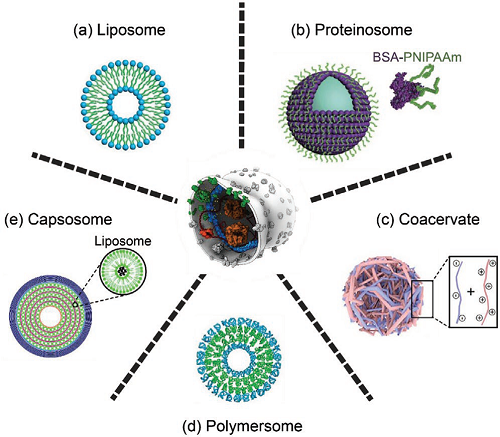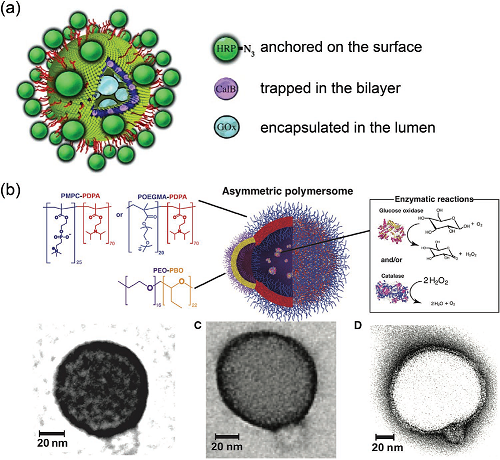
Despite being the most basic units of life, cells are highly intricate and elegant systems. They require a precise cocktail of conditions and components to carry out complex processes essential to their survival and propagation. While scientists have not yet synthetically produced a fully autonomous living cell, certain structures and processes have been mimicked in a laboratory setting. The most important advances in this emerging field of bottom-up biomimicry are summarised in a new review published in the scientific journal Small. Samuel Sánchez, who is the leader of the Smart Nano-Bio-Devices Group at the Institute for Bioengineering of Catalonia (IBEC) and also an ICREA Research Professor, is co-author of this article, alongside experts from the Eindhoven University of Technology in the Netherlands and the Harbin Institute of Technology in China. The review covers four areas of synthetic biomimicry: cellular compartmentalization, biological reactions for energy production, motility and communicative behaviours.
The first section explores the different types of soft cellular membranes and compartments that have been synthetically produced, some of which are already widely used in biomedicine. From basic structures like liposomes, to more complex membranes with selective permeability—such as proteinosomes, coacervates and polymersomes —the authors provide an overview of the procedures used to synthesize each, their basic capabilities, and how closely they mimic nature. While cellular membranes are essential for creating the right conditions for life, living systems also need to be able to transform energies from external sources. Also known as metabolism, it is this process that enables cells to undertake more complex reactions leading to, for example, changes in shape and division. In this review, the experts summarise some of the life-like biochemical reactions that have been replicated in a laboratory setting, including the activation of complex enzymatic cascades, and modulation of enzyme activity. They note that the feats achieved in this area, while impressive, are still far from the highly elaborate strings of bioreactions observed in living cells.
The most important advances in the emerging field of cellular biomimicry are summarised in a review published in the scientific journal Small. The piece covers the synthesis of soft compartments, biochemical reaction, cellular motility and communication behaviours.

Reproduced with permissions.[40] Copyright 2009, Wiley-VCH. b) Schematic representation and TEM images of a chemotactic polymersome using a
combination of membrane topology formed by PEO-PBO copolymers mixed with either PMPC-PDPA or POEGMA-PDPA copolymers. Reproduced with
permissions.[55] Copyright 2017, American Association for the Advancement of Science (AAAS).
The authors also discuss the different ways that researchers have recreated intercellular communication, both among artificial cells, and between artificial and natural cell communities. To date, these experiments have only been performed with bacterial cells, but the experts suggest that future research using mammalian and human cells will be necessary to further develop this field and build a better understanding of its potential biomedical applications.
Biomimicry has made great headway in the past few decades, with the most recent advances focusing on endowing synthetic cells with motility and the ability to communicate. Although there is still much progress to be made, the bottom-up approach has provided a great understanding of these most basic units of life by allowing us to think in the same way that nature does.
Reference article: Lei Wang, Shidong Song, Jan van Hest, Loai K. E. A. Abdelmohsen, Xin Huang, Samuel Sánchez (2020) “Biomimicry of Cellular Motility and Communication Based on Synthetic Soft‐Architectures.” Small, 2020.





